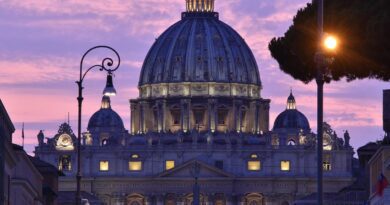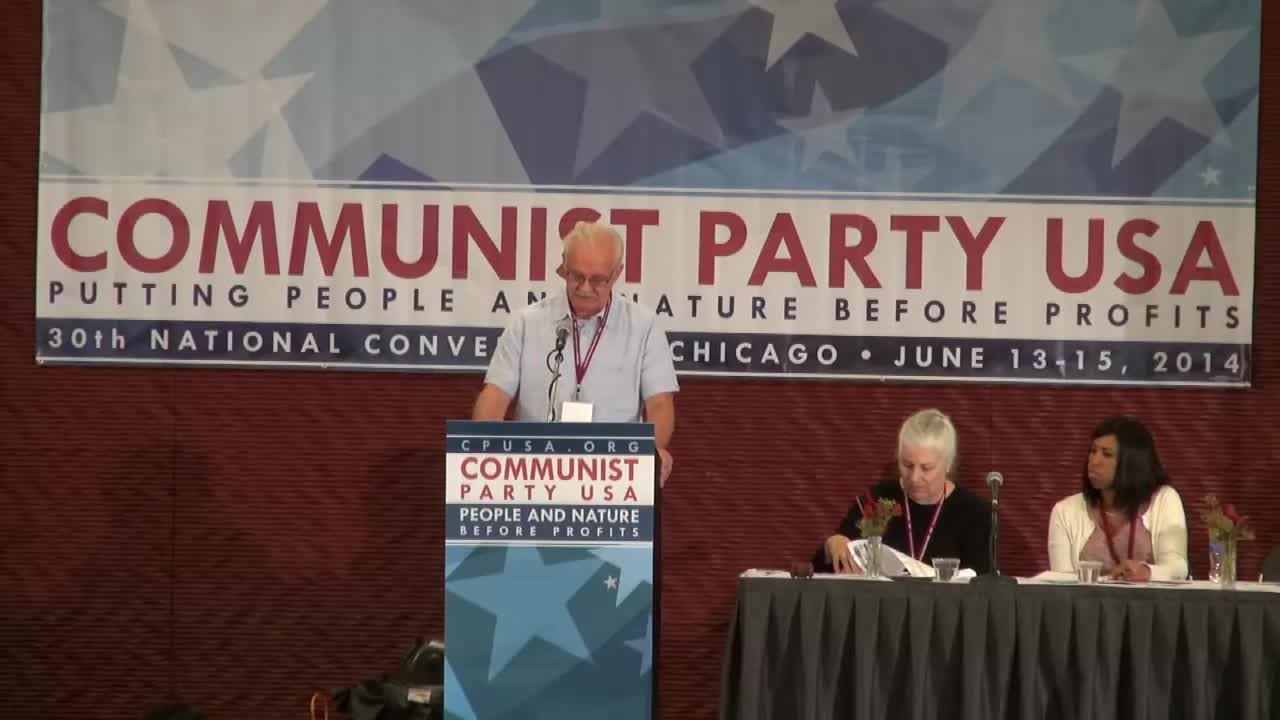“Vladimir, the Liberator” – a historiosophy of Russian aggression (Part 2)

The departure from the universal progressive rhetoric used by the Soviet Union in favor of the mythology of Slavicism and Orthodoxy reduces the scale of the effectiveness of Putin’s propaganda. This does not mean, however, that his ideology is less dangerous.
Piotr Semka
(…)
As in any solid founding legend, Putin also needs the theme of the eternal enemy for the purpose of his narrative. Poles and Lithuanians have been cast in this role for centuries. As Putin writes in his manifesto: “In the 14th century, the ruling elite of Lithuania adopted Catholicism. In the 16th century, a union of Lublin with the Kingdom of Poland was concluded – the Polish-Lithuanian Commonwealth was established. Polish Catholic nobility received considerable estates and privileges in Ruthenia. Under the Union of Brest in 1596, part of the Western Orthodox clergy came under the authority of the Roman pope. Polonization and Romanization followed, and Orthodoxy was weakening”.
Putin remains silent about the fact that the Polish nobility added hundreds of Ruthenian families to their coats of arms, which had practiced Orthodoxy for a very long time. He prefers to immediately turn to the figure of Bohdan Khmelnitsky, who also appears in his narrative as a providential man whose main task was to restore the subjection of the inhabitants of Ukraine to the jurisdiction of the tsars, and the in terms of religion – the Moscow Patriarchate. Putin praises the decision to merge with Russia, stressing that “MPs from Khmelnitsky and Moscow visited dozens of cities, including Kyiv, whose inhabitants swore their allegiance to the Russian tsar”, and adds virulently: “On a separate note, there were no such consultations when concluding the Union of Lublin”.
Once again, the motif Poles as foreign despots trying to confuse the minds of the inhabitants of Ukraine, appear in Putin’s version of history in 1863. As the Kremlin ruler states, “Objective facts prove that the Belarusian cultural identity was dynamically developing in the Russian Empire within the broad Russian ethnos, which would bring together Great Russians, Lesser Russians, and Belarusians. And at the same time, the concept of a Ukrainian nation separate from the Russian one emerged and perpetuated among the Polish elite and part of the Lesser Russian intelligentsia. It did not and could not have any historical basis, so conclusions were built on various fictions. Even such that the Ukrainians are allegedly not Slavs at all, or on the contrary – they are real Slavs, unlike the Russians, that is, “Muscovites”. Such hypotheses were used more and more often for political purposes as an instrument of rivalry between European countries. From the end of the 19th century, the Austro-Hungarian authorities picked up this rhetoric as a counterweight to the Polish national movement and to the pro-Moscow sentiment in Galicia”.
It is worth looking at the last few sentences of this argument. Putin first suggests that Ukrainians are a Polish invention, and then, without blinking an eye, proves that the ideas of the Ukrainian nation were picked up by the Austrians as a weapon against Poles. Anyone who knows the history of Galicia in the 19th century knows how many Polish journalists were angry with the theses about the existence of the Ukrainian nation, proclaiming that there are no Ukrainians, but only Ruthenians, who are part of the broadly understood ethnos of the Lviv region, equipped with a natural instinct of loyalty to the Polish state.
An important element of the narrative of Russian chauvinists is pointing to the diabolical role of the Catholic Church, which had strived for a union with Rome and “seduced” some Orthodox Ukrainians for this purpose. This legend of insidious Jesuits once again disregards the fact that the Lublin Union attracted many former Orthodox priests because it contained many desirable features, especially for the lower Orthodox clergy.
This topic has resurfaced in recent years, when Orthodox Ukrainians, fed up with Putin’s use of the Moscow Orthodox Church patriarchate to implement the Kremlin’s pro-Russian policy, decided to establish an autocephalous Orthodox Church of Ukraine. Although in this process the decisions about the autocephaly of Ukrainian Orthodox Christians were made by the patriarch in Constantinople, Putin’s propaganda further presented it as a result of a conspiracy by Western countries.
UKRAINE AS A PARIAH STATE?
Putin makes it very clear that Ukraine is a country that cannot be tolerated by Russia. He presents the entire period of independent Ukraine after 1991 as an artificial creation of a state incapable of independent existence. The development of the events in 2014 is to be the ultimate proof. “The Ukrainian tragedy of 2014 was a consequence of NATO’s aggressive policy”. – he wrote in June 2021 in the text for the German magazine Die Zeit. – Europe actively supported the armed, unconstitutional coup in Ukraine. […] The incumbent president at the time, Viktor Yanukovych, had already accepted all the demands of the opposition. Why was this coup d’état in Ukraine organized? According to this logic, the historical task of Russia is to take care of the entire population of present-day Ukraine as a group of Slavic and Orthodox people subjected to the experiment of creating an artificial state. According to Moscow’s view, Ukraine is not a democratic country and as such has no right to invoke the principles of democracy”.
Putin’s theses were developed in a creative way with the recent declaration by the head of Russian diplomacy, Sergei Lavrov, that Ukraine has no right to claim sovereignty. As Lavrov announced: “One can speak of sovereignty only in relation to states that represent their entire population”. Lavrov continues that a large part of the Ukrainian population under the despotic regime in Kiev is unable to fulfill their will to stay with Russia. In this aspect, Lavrov’s rhetoric resembles the Soviet propaganda of the interwar period, when it was shamelessly argued that the working masses of Finland, the Baltic states, Poland, or the so-called Western Belarus and Ukraine dreamt of joining the USSR and only “white” terror stood in the way.
A LIFE TASK
Nowadays, it is rare to see a leader of a strong state justifying his foreign policy with a long historical monologue. A vision in which all the rules of international law and agreements signed by Russia and earlier by the USSR are disregarded. All in the name of ethnic mysticism dating back to the 18th and 9th centuries. Does Putin consider this to be his life task? In this respect, Putin’s long tirade from February 21st sometimes resembled the historiosophical fantasies of Adolf Hitler contained in the pages of Mein Kampf. Russia’s military power and its tactic of playing with the fire of war, which paralyzes the West, turn the entire spectacle into a genuine threat to the security of our region. As has happened more than once, the Western viewer is amazed at the ease of the Russian authorities to use obvious lies.
The departure from the universal progressive rhetoric used by the Soviet Union in favor of the mythology of the Slavic and Orthodox schools limits the scale of the effectiveness of such propaganda. While in the era of Lenin or Stalin, the slogans of the struggle of the masses and the emancipation of workers could be easily understood by intellectuals from Rome, Paris or Mexico, the ideologies of the “Russian Mir” can only accept Russophiles in Minsk or Donetsk. But it is not very attractive to Kazakhs, Azerbaijanis, and Kyrgyz people. The ruler of the Kremlin is playing with fire. What will happen when the slogans of creating a common ethnic Turanian empire are picked up in some time by the Tatars from Russian Kazan? And the Chechens, who exist today in the Russian Federation, will soon throw ideas of a common state for Caucasian Muslims?
In this respect, thank God, Putinist ideology does not resonate as strongly as communism. But it doesn’t mean it’s any less dangerous.
This article was published in March 2022 in “Do Rzeczy” magazine.



